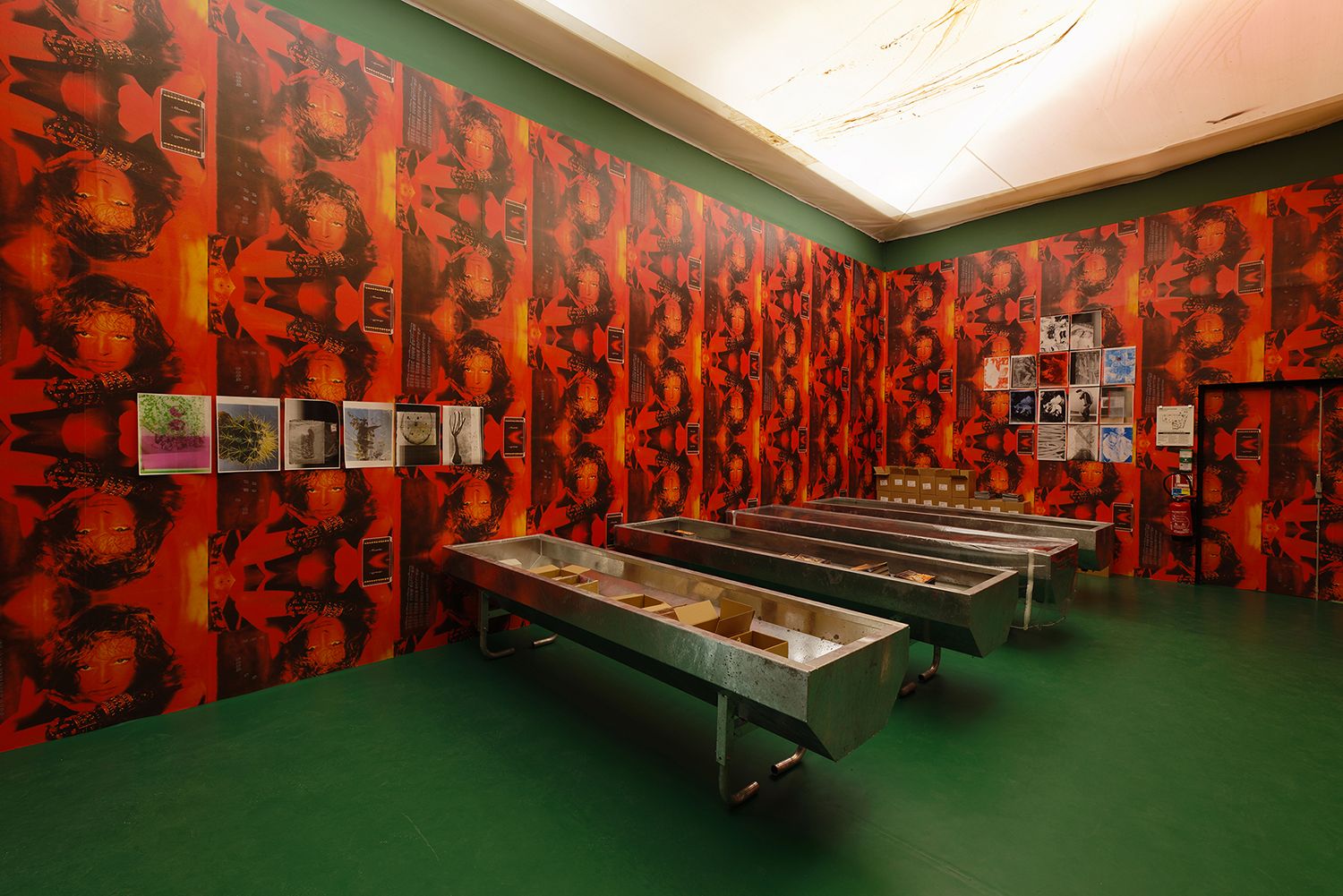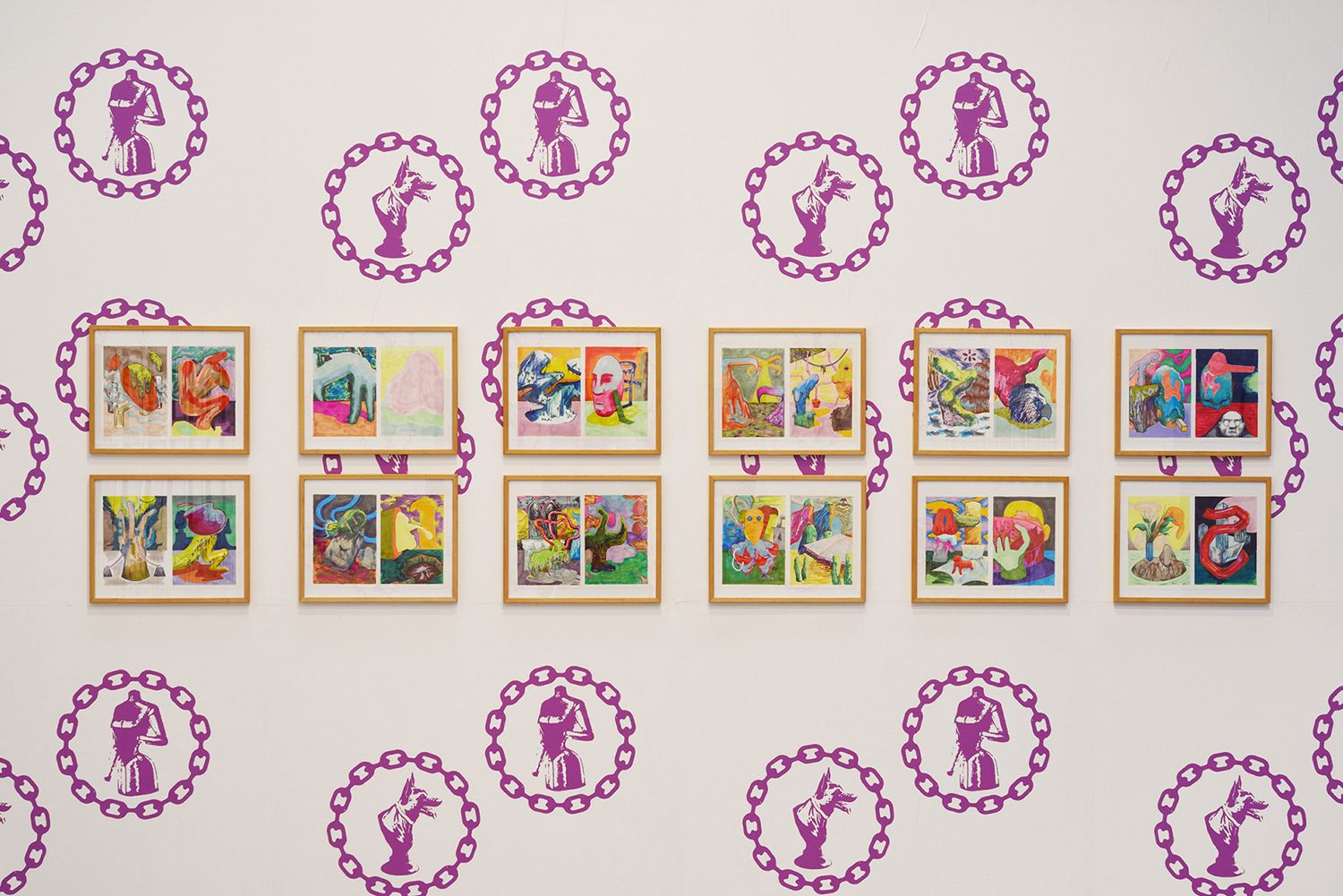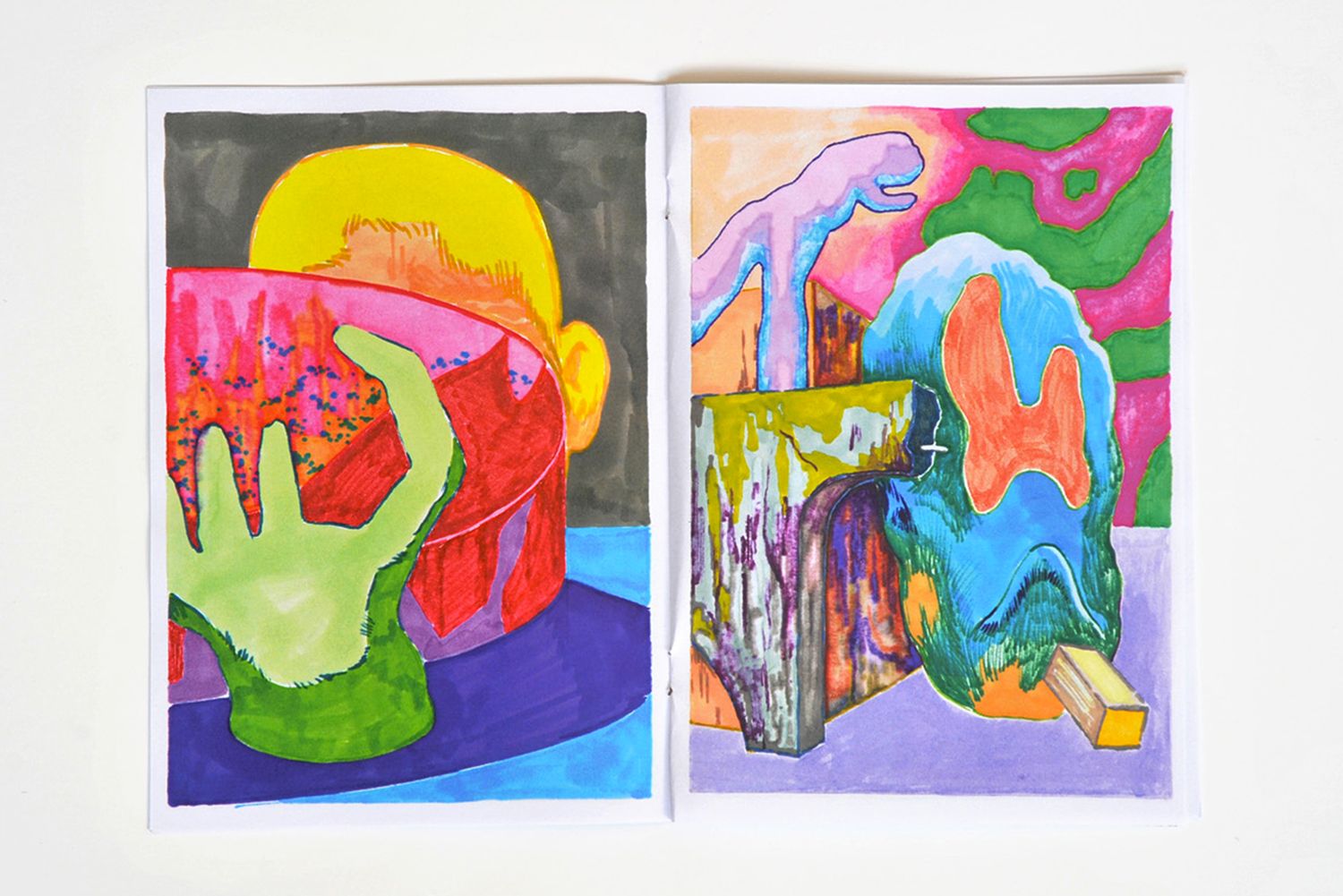Jonas Delaborde
Born in 1981
Lives and works in Lyon

NK 12 EGIPAN, 2019
Exhibition view, «Futur, ancien, fugitif - Une scène française », Palais de Tokyo, Paris
Photo : © Aurélien Mole

off-cells exhibition, 2017
Exhibition view, Le 19 CRAC, Regional Center for Contemporary Art, Montbéliard
© All rights reserved

Ffor #16 - Mojang Shadow Stream / Final Destination, 2012
14.8 x 21 cm, 24 pages, 50 copies
Photo : © Sarah Lowicki

Nazi Knife #12 - EGIPAN, 2019
16.7 x 24 cm, 68 pages, 7000 copies Published by IRAS Produktion, Paris
Edited by Jonas Delaborde and Hendrik Hegray
© All rights reserved
Statement, 2022
“It’s 2022 and I’m almost 41. I keep publishing booklets. These are sometimes called zines, fanzines, or graphzines – the latter term is wrong, I believe. Harsh Patel, whom I sometimes collaborate with and who has published several of mine, simply calls them books, even though they are sometimes printed in his living room and only yield a handful of copies. PES, who has published other books of mine among dozens, if not hundreds of his and his friends’ works, uses the same term: little books. And so I continue to publish books. […] In 2018, I also started course in art history, more than ten years after having worked painstakingly for my sculpting degree at the Fine Arts School in Paris. I am currently working on my PhD thanks to a research grant from the University of Nanterre. The subject of my research: graphzines. […]
Even as enter my forties, as I pursue my endeavours in publishing, drawing, and sometimes exhibiting, I still find it hard to isolate and understand what it is I do exactly. It has something to do with the books I read and the books I publish. Everything functions as an open circuit, through reproduction and recycling, and there is never any set end. To put it simply, this flux – which, it must be said, is discontinuous – is fuelled by the pleasure I find in doing things. I draw whatever I find amusing to draw, whatever comes to mind. I scan images I come across and which require me to do so, either because they are exciting or because there is something imperative about them. It is a light-hearted, opportunistic and playful modus operandi. However, it does not exclude a certain degree of sophistication, some foreseeable or long-term goals. But yes, I do tend to dawdle. Also: each gesture, each title and each book comes with a subtitle, a caption, a translation, like a furrow that runs through several strata.
[…] In addition to the critical apparatuses or reuse of forms from various origins, there are also figurative drawings that could be described as fantastical (as Philippe Druillet defines it, and without any claims to their quality), erotic or humoristic. However, I am not sure this heterogeneity needs to be remedied, as if it were a form of irresolution. My academic work compels me to consider a historic outlook. My own books, my own practice of making books, are inevitably understood in regard to the way other graphzine artists work. This does not make things any easier. Indeed, this is a motley group of graphic artists and illustrators, sometimes enthusiastically involved in advertisement, as well as romantic and erudite mavericks, at times fragile to the point of being dissocialised. […] This is why I mentioned the names of some of the people who publish my books, contribute to them, or comment them. They are the co-authors of these works, whether they participated actively in their making or simply because I imagined what their opinions on these works would be.”
Translated by Lucy Pons